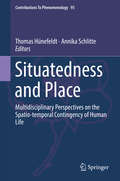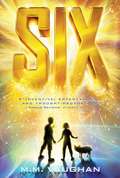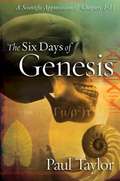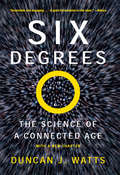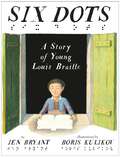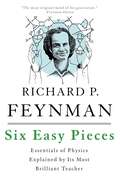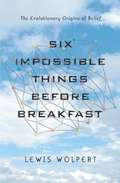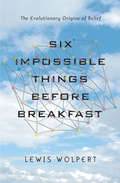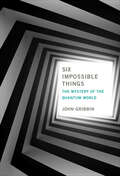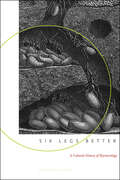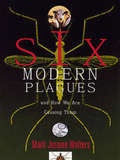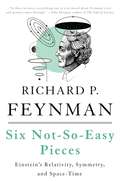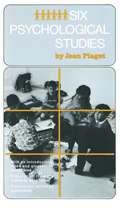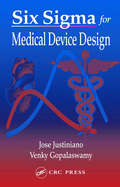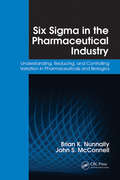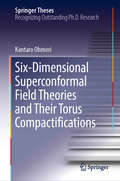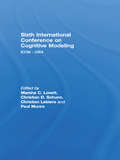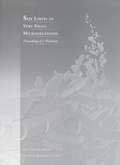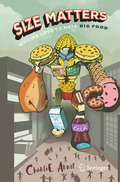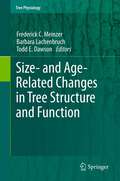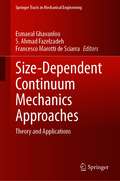- Table View
- List View
Situatedness and Place: Multidisciplinary Perspectives on the Spatio-temporal Contingency of Human Life (Contributions To Phenomenology #95)
by Thomas Hünefeldt Annika SchlitteThis book explores the ways in which the spatio-temporal contingency of human life is being conceived in different fields of research. Specifically, it looks at the relationship between the situatedness of human life, the situation or place in which human life is supposed to be situated, and the dimensions of space and time in which both situation and place are usually themselves supposed to be situated. Over the last two or three decades, the spatio-temporal contingency of human life has become an important topic of research in a broad range of different disciplines including the social sciences, the cultural sciences, the cognitive sciences, and philosophy. However, this research topic is referred to in quite different ways: while some researchers refer to it in terms of “situation”, emphasizing the “situatedness” of human experience and action, others refer to it in terms of “place”, emphasizing the “power of place” and advocating a “topological” or “topographical turn” in the context of a larger “spatial turn”. Interdisciplinary exchange is so far hampered by the fact that the notions referred to and the relationships between them are usually not sufficiently questioned. This book addresses these issues by bringing together contributions on the spatio-temporal contingency of human life from different fields of research.
Six
by M. M. VaughanParker and his sister will do whatever it takes to find their father in this adventure packed with action and mystery from the author of The Ability and Mindscape.Parker and his family share a secret: they can, with the help of advanced technology, communicate between themselves through their thoughts.When Parker, his dad, and sister Emma move to New York three years after his mother's death, Parker is having a hard time. He misses London and his friends, his father is distracted with his new job, and Emma is looking out for him instead of the other way around. And then Parker's dad, on the cusp of a technological breakthrough, is kidnapped. Thanks to a message his dad sent via thoughts before the signal cut off, Parker is suddenly on a rescue mission. Now Parker and Emma, along with their friend Michael and Polly the pig, must find this person--the only link to their father--but the search asks more questions than it answers. But all the signs point to one thing: the company his dad works for is up to something big. Huge. A perfectly sinister project that threatens far more than Parker's family. A project called SIX.
Six Days of Genesis
by Paul F. TaylorDiscover the five powerful truths within the phrase "In the beginning God?." Learn just how closely evolutionists and creationists agree on the division of land and water on the earth. Uncover the biblical clue to where energy came from to explore life processes on an earth without form and void. Explore whether there is any truth to the recolonization theory. Can we really trust Genesis as the literal history of the world? Many modern scholars and scientists would have you believe that you can't, but this fascinating expository study by Paul F. Taylor lays all doubts about the authenticity of the Bible to rest. Follow this spellbinding, verse-by-verse study Taylor takes you on from the Garden of Eden to the Fall to the Table of Nations.Many Christians are alarmed by the disappearance of true biblical teachings in churches and even in many seminaries across America and Britain, but this much-needed resource for teaching prospective clergy and professors will help to battle the disturbing departure from biblical truth. This exciting new tool is a wonderful aid for those who wish to defend against the evolutionary attacks leveled at them by society and sometimes even by the church.
Six Degrees: The Science of a Connected Age
by Duncan J. WattsThe pioneering young scientist whose work on the structure of small worlds has triggered an avalanche of interest in networks. In this remarkable book, Duncan Watts, one of the principal architects of network theory, sets out to explain the innovative research that he and other scientists are spearheading to create a blueprint of our connected planet. Whether they bind computers, economies, or terrorist organizations, networks are everywhere in the real world, yet only recently have scientists attempted to explain their mysterious workings. From epidemics of disease to outbreaks of market madness, from people searching for information to firms surviving crisis and change, from the structure of personal relationships to the technological and social choices of entire societies, Watts weaves together a network of discoveries across an array of disciplines to tell the story of an explosive new field of knowledge, the people who are building it, and his own peculiar path in forging this new science.
Six Dots: A Story of Young Louis Braille
by Jen BryantAn inspiring picture-book biography of Louis Braille—a blind boy so determined to read that he invented his own alphabet.**Winner of a Schneider Family Book Award!** Louis Braille was just five years old when he lost his sight. He was a clever boy, determined to live like everyone else, and what he wanted more than anything was to be able to read. Even at the school for the blind in Paris, there were no books for him. And so he invented his own alphabet—a whole new system for writing that could be read by touch. A system so ingenious that it is still used by the blind community today. Award-winning writer Jen Bryant tells Braille&’s inspiring story with a lively and accessible text, filled with the sounds, the smells, and the touch of Louis&’s world. Boris Kulikov&’s inspired paintings help readers to understand what Louis lost, and what he was determined to gain back through books. An author&’s note and additional resources at the end of the book complement the simple story and offer more information for parents and teachers. Praise for Six Dots: "An inspiring look at a child inventor whose drive and intelligence changed to world—for the blind and sighted alike."—Kirkus Reviews"Even in a crowded field, Bryant&’s tightly focused work, cast in the fictionalized voice of Braille himself, is particularly distinguished."—Bulletin, starred review"This picture book biography strikes a perfect balance between the seriousness of Braille&’s life and the exuberance he projected out into the world." — School Library Journal, starred review
Six Easy Pieces: Essentials of Physics Explained By its Most Brilliant Teacher
by Richard Feynman Matthew Sands Robert B. LeightonEssentials Of Physics told by its Most Brilliant Richard P. Feynmen Richard P. Feynman (1918-1988) was widely recognized as the most creative physicist of the post-World War II period. His career was extraordinarily expansive. From his contributions to the development of the atomic bomb at Los Alamos during World War II to his work in quantum electrodynamics, for which he was awarded the Nobel Prize in 1965, Feynman was celebrated for his brilliant and irreverent approach to physics. It was Feynman's outrageous and scintillating method of teaching that earned him legendary status among students and professors of physics. From 1961 to 1963, Feynman, at the California Institute of Technology, delivered a series of lectures that revolutionized the teaching of physics around the world. SIX EASY PIECES, taken from these famous Lectures on Physics, represents the most accessible material from this series. In these six chapters, Feynman introduces the general reader to the following topics: atoms, basic physics, the relationship of physics to other topics, energy, gravitation, and quantum force. With his dazzling and inimitable wit, Feynman presents each discussion without equations or technical jargon. Readers will remember how�using ice water and rubber�Feynman demonstrated with stunning simplicity to a nationally televised audience the physics of the 1986 Challenger disaster. It is precisely this ability �the clear and direct illustration of complex theories�that made Richard Feynman one of the most distinguished educators in the world. Filled with wonderful examples and clever illustrations, SlX EASY PIECES is the ideal introduction to the fundamentals of physics by one of the most admired and accessible scientists of our time.
Six Easy Pieces: Essentials of Physics Explained by Its Most Brilliant Teacher
by Matthew Sands Robert B. Leighton Richard P. FeynmanThe six easiest chapters from Feynman's landmark work,Lectures on Physics-- specifically designed for the general, non-scientist reader.
Six Facets Of Light
by Ann Wroe'She's a genius, I believe, because she lights up every subject she touches.' Hilary Mantel A Spectator Book of the YearGoethe claimed to know what light was. Galileo and Einstein both confessed they didn't. On the essential nature of light, and how it operates, the scientific jury is still out. There is still time, therefore, to listen to painters and poets on the subject. They, after all, spend their lives pursuing light and trying to tie it down.Six Facets of Light is a series of meditations on this most elusive and alluring feature of human life. Set mostly on the Downs and coastline of East Sussex, the most luminous part of England, it interweaves a walker's experiences of light in Nature with the observations, jottings and thoughts of a dozen writers and painters - and some scientists - who have wrestled to define and understand light. From Hopkins to Turner, Coleridge to Whitman, Fra Angelico to Newton, Ravilious to Dante, the mystery of light is teased out and pondered on. Some of the results are surprising.By using mostly notebooks and sketchbooks, this book becomes a portrait of the transitoriness, randomness, swiftness, frustrations and quicksilver beauty that are the essence of light. It is a work to be enjoyed, pondered over, engaged with, provoked by; to be packed in the rucksack of every walker heading for the sea or the hills, or to be opened to bring that outside radiance within four dark town walls.Lifescapes by Ann Wroe is coming in August 2023.
Six Impossible Things Before Breakfast: The Evolutionary Origins of Belief
by Lewis Wolpert[From the book jacket] Why do 70 percent of Americans believe in angels, while others are convinced that they've been abducted by aliens? Why does every society around the world have a religious tradition of some sort? What makes people believe in improbable things when all the evidence points to the contrary? In Through the Looking Glass, the White Queen tells Alice that to believe in a wildly far-fetched fact, she simply needs to "draw a long breath and shut [her] eyes." Alice finds this advice ridiculous. But don't almost all of us, at some time or another, engage in magical thinking? Franklin Roosevelt and Winston Churchill canceled all appointments on Friday the 13th. Niels Bohr tacked a horseshoe over his desk-just to add some luck to his quantum universe. In Six Impossible Things Before Breakfast, evolutionary biologist Lewis Wolpert delves into the important and timely debate over the nature of belief, looking at belief's psychological basis to discover just what evolutionary purpose it could serve. Are there advantages to imaginary friends and fantasy worlds, superstitions and religions? Are we born with an evolutionary defense mechanism to believe in things that make us feel better about the world? Wolpert leads the reader through all that science can tell us about the beliefs of which we are so instinctually sure. He deftly explores these questions and the different types of belief - those of children, of animals, of the religious, and of those suffering from psychiatric disorders - and he asks whether it is possible to live without belief, or whether it is a necessary component of a functioning society.
Six Impossible Things Before Breakfast: The Evolutionary Origins of Belief
by Lewis Wolpert"Marvelously funny and provocative."—Publishers Weekly Why do 70 percent of Americans believe in angels, while others are convinced that they were abducted by aliens? What makes people believe in improbable things when all the evidence points to the contrary? And don't almost all of us, at some time or another, engage in magical thinking?In Six Impossible Things Before Breakfast, evolutionary biologist Lewis Wolpert delves into the important and timely debate over the nature of belief, looking at its psychological foundations to discover just what evolutionary purpose it could serve. Wolpert takes us through all that science can tell us about the beliefs we feel are instinctive. He deftly explores different types of belief—those of children, of the religious, and of those suffering from psychiatric disorders—and he asks whether it is possible to live without belief, or whether it is a necessary component of a functioning society.
Six Impossible Things: The Mystery of the Quantum World (The\mit Press Ser.)
by John GribbinA concise and engaging investigation of six interpretations of quantum physics.Rules of the quantum world seem to say that a cat can be both alive and dead at the same time and a particle can be in two places at once. And that particle is also a wave; everything in the quantum world can described in terms of waves—or entirely in terms of particles. These interpretations were all established by the end of the 1920s, by Erwin Schrödinger, Werner Heisenberg, Paul Dirac, and others. But no one has yet come up with a common sense explanation of what is going on. In this concise and engaging book, astrophysicist John Gribbin offers an overview of six of the leading interpretations of quantum mechanics. Gribbin calls his account “agnostic,” explaining that none of these interpretations is any better—or any worse—than any of the others. Gribbin presents the Copenhagen Interpretation, promoted by Niels Bohr and named by Heisenberg; the Pilot-Wave Interpretation, developed by Louis de Broglie; the Many Worlds Interpretation (termed “excess baggage” by Gribbin); the Decoherence Interpretation (“incoherent”); the Ensemble “Non-Interpretation”; and the Timeless Transactional Interpretation (which theorized waves going both forward and backward in time). All of these interpretations are crazy, Gribbin warns, and some are more crazy than others—but in the quantum world, being more crazy does not necessarily mean more wrong.
Six Legs Better: A Cultural History of Myrmecology (Animals, History, Culture)
by Charlotte SleighAnts long have fascinated linguists, human sociologists, and even cyberneticians. At the end of the nineteenth century, ants seemed to be admirable models for human life and were praised for their work ethic, communitarianism, and apparent empathy. They provided a natural-theological lesson on the relative importance of humans within creation and inspired psychologists to investigate the question of instinct and its place in the life of higher animals and humans. By the 1930s, however, ants came to symbolize one of modernity's deepest fears: the loss of selfhood. Researchers then viewed the ant colony as an unthinking mass, easily ruled and slavishly organized.In this volume, Charlotte Sleigh uses specific representations of ants within the field of entomology from the late nineteenth to mid-twentieth centuries to explore the broader role of metaphors in science and their often unpredictable translations. Marking the centenary of the coining of "myrmecology" to describe the study of ants, Six Legs Better demonstrates the remarkable historical role played by ants as a node where notions of animal, human, and automaton intersect.
Six Legs Better: A Cultural History of Myrmecology (Animals, History, Culture)
by Charlotte SleighThis “provocative, complex” cultural history examines how the study of ants influenced shifting perceptions of humanity in the nineteenth and twentieth centuries (Times Literary Supplement, UK).Ants long have fascinated linguists, human sociologists, and even cyberneticians. At the end of the nineteenth century, ants seemed to be admirable models for human life and were praised for their work ethic, communitarianism, and apparent empathy. They provided a natural-theological lesson on the relative importance of humans within creation and inspired psychologists to investigate the question of instinct and its place in the life of higher animals and humans. By the 1930s, however, ants came to symbolize one of modernity’s deepest fears: the loss of selfhood. Researchers then viewed the ant colony as an unthinking mass, easily ruled and slavishly organized.In this volume, Charlotte Sleigh uses specific representations of ants within the field of entomology from the late nineteenth to mid-twentieth centuries to explore the broader role of metaphors in science and their often unpredictable translations. Six Legs Better demonstrates the remarkable historical role played by ants as a node where notions of animal, human, and automaton intersect.
Six Modern Plagues and How We Are Causing Them: And How We Are Causing Them
by Mark Jerome WaltersWest Nile Virus -- Mad Cow Disease -- HIV/AIDS -- Hantavirus -- Lyme Disease ... and a new strain of Salmonella. Such modern epidemics have emerged over the past few decades as mysterious, yet significant risks to human health. These "plagues" are forcing us to modify our lifestyles in ways that minimize our chances of becoming a statistic in the latest tally of the afflicted. In Six Modern Plagues, Mark Jerome Walters offers us the first book for the general reader that connects these emerging health risks and their ecological origins. Drawing on new research, interviews, and his own investigations, Mark Jerome Walters weaves together a compelling argument: that changes humans have made to the environment, from warming the climate to clearing the forests, have contributed to, if not caused a rising tide of diseases that are afflicting humans and many other species. According to Mark Jerome Walters, humans are not always innocent bystanders to infectious disease. To the contrary, in the case of many modern epidemics, we are the instigators. Six Modern Plagues, a ground-breaking introduction to the connection between disease and environmental degradation should be read by all those interested in their health and the health of others.
Six Not-So-Easy Pieces: Einstein's Relativity, Symmetry, and Space-Time
by Matthew Sands Robert B. Leighton Richard P. FeynmanSix lectures, all regarding the most revolutionary discovery in twentieth-century physics: Einstein's Theory of Relativity. No one--not even Einstein himself--explained these difficult, anti-intuitive concepts more clearly, or with more verve and gusto, than Feynman.
Six Psychological Studies
by Jean PiagetClassic text of child development. Translated by Anita Tenzer and introduced by David Elkind.
Six Sigma for Medical Device Design
by Jose Justiniano Venky GopalaswamySix Sigma for Medical Device Design is the first book to apply Six Sigma principles to the design of medical devices. Authored by experienced professionals, it uses real world examples and sample plans to provide a practical how-to guide for implementation. This volume also links the Six Sigma philosophy with the FDA's Design Control and ISO regulations, useful for companies that must be compliant as well as for those in the process of implementing a quality system for design control. This book is an excellent tool for technical and scientific personnel to understand the realities of business and markets, to comply with stringent quality and safety standards, and to optimize the product realization process.
Six Sigma in the Pharmaceutical Industry: Understanding, Reducing, and Controlling Variation in Pharmaceuticals and Biologics
by Brian K. Nunnally John S. McConnellSix Sigma in the Pharmaceutical Industry is the first book to introduce the fundamentals of Six Sigma, examine control chart theory and practice, and explain the concept of variation management and reduction applied specifically to the pharmaceutical industry. The first half lays out a conceptual framework for understanding variation, while the second half introduces control chart theory and practice. Using case studies and statistics, the book illustrates the concepts and explains their application to actual workplace improvements. Providing the basis for a complete operating philosophy, this book focuses on core concepts and their implementation to improve the existing products and processes in the pharmaceutical industry.
Six-Dimensional Superconformal Field Theories and Their Torus Compactifications (Springer Theses)
by Kantaro OhmoriThis thesis describes the structures of six-dimensional (6d) superconformal field theories and its torus compactifications. The first half summarizes various aspects of 6d field theories, while the latter half investigates torus compactifications of these theories, and relates them to four-dimensional superconformal field theories in the class, called class S. It is known that compactifications of 6d conformal field theories with maximal supersymmetries provide numerous insights into four-dimensional superconformal field theories. This thesis generalizes the story to the theories with smaller supersymmetry, constructing those six-dimensional theories as brane configurations in the M-theory, and highlighting the importance of fractionalization of M5-branes. This result establishes new dualities between the theories with eight supercharges.
Sixth International Conference on Cognitive Modeling: ICCM - 2004
by Michael C. Mozer Kenneth D. ForbusThe International Conference on Cognitive Modeling brings together researchers who develop computational models to explain and predict cognitive data. The core theme of the 2004 conference was "Integrating Computational Models," encompassing an integration of diverse data through models of coherent phenomena; integration across modeling approaches; and integration of teaching and modeling. This text presents the proceedings of that conference. The International Conference on Cognitive Modeling 2004 sought to grow the discipline of computational cognitive modeling by providing a sophisticated modeling audience for cutting-edge researchers, in addition to offering a forum for integrating insights across alternative modeling approaches in both basic research and applied settings, and a venue for planning the future growth of the discipline. The meeting included a careful peer-review process of 6-page paper submissions; poster-abstracts to include late-breaking work in the area; prizes for best papers; a doctoral consortium; and competitive modeling symposia that compare and contrast different approaches to the same phenomena.
Size Effect in Concrete Materials and Structures
by Xiuli Du Liu JinThe present book gathers a large amount of the recent research results on this topic to provide a better understanding of the size effect by giving a quantitative description of the relationship between the properties of engineering concrete-making material (e.g. the nominal strength) and the corresponding structure size. To be precise, this is about to explore the new static and dynamic unified size effect laws for concrete materials, as well as size effect laws for concrete components. Besides presenting clear and accurate descriptions that further deepen our fundamental knowledge, this book provides additionally useful tools for the scientific design of concrete structures in practical engineering applications.
Size Limits of Very Small Microorganisms: Proceedings of a Workshop
by National Research CouncilA report on Size Limits of Very Small Microorganisms
Size Matters: Why We Love to Hate Big Food
by Charlie ArnotDespite food being safer, more affordable and more available than at any time in human history, consumers are increasingly skeptical and critical of today’s food system. In Size Matters, Charlie Arnot provides thought provoking insight into how the food system lost consumer trust, what can be done to restore it, and the remarkable changes taking place on farms and in food companies, supermarkets and restaurants every day as technology and consumer demand drive radical change. The very systems and technologies that are mistrusted by consumers are driving a revolution that empowers individual consumers to find the perfect recipe of taste and nutrition to meet their specific needs and desires. Size Matters pulls back the curtain to examine the irony, competing priorities and new realities that shape today’s food system.
Size- and Age-Related Changes in Tree Structure and Function
by Barbara Lachenbruch Todd E. Dawson Frederick C. MeinzerMillions of trees live and grow all around us, and we all recognize the vital role they play in the world's ecosystems. Publicity campaigns exhort us to plant yet more. Yet until recently comparatively little was known about the root causes of the physical changes that attend their growth. Since trees typically increase in size by three to four orders of magnitude in their journey to maturity, this gap in our knowledge has been a crucial issue to address. Here at last is a synthesis of the current state of our knowledge about both the causes and consequences of ontogenetic changes in key features of tree structure and function. During their ontogeny, trees undergo numerous changes in their physiological function, the structure and mechanical properties of their wood, and overall architecture and allometry. This book examines the central interplay between these changes and tree size and age. It also explores the impact these changes can have, at the level of the individual tree, on the emerging characteristics of forest ecosystems at various stages of their development. The analysis offers an explanation for the importance of discriminating between the varied physical properties arising from the nexus of size and age, as well as highlighting the implications these ontogenetic changes have for commercial forestry and climate change. This important and timely summation of our knowledge base in this area, written by highly respected researchers, will be of huge interest, not only to researchers, but also to forest managers and silviculturists.
Size-Dependent Continuum Mechanics Approaches: Theory and Applications (Springer Tracts in Mechanical Engineering)
by Esmaeal Ghavanloo S. Ahmad Fazelzadeh Francesco Marotti de SciarraThis book offers a comprehensive and timely report of size-dependent continuum mechanics approaches. Written by scientists with worldwide reputation and established expertise, it covers the most recent findings, advanced theoretical developments and computational techniques, as well as a range of applications, in the field of nonlocal continuum mechanics. Chapters are concerned with lattice-based nonlocal models, Eringen’s nonlocal models, gradient theories of elasticity, strain- and stress-driven nonlocal models, and peridynamic theory, among other topics. This book provides researchers and practitioners with extensive and specialized information on cutting-edge theories and methods, innovative solutions to current problems and a timely insight into the behavior of some advanced materials and structures. It also offers a useful reference guide to senior undergraduate and graduate students in mechanical engineering, materials science, and applied physics.
